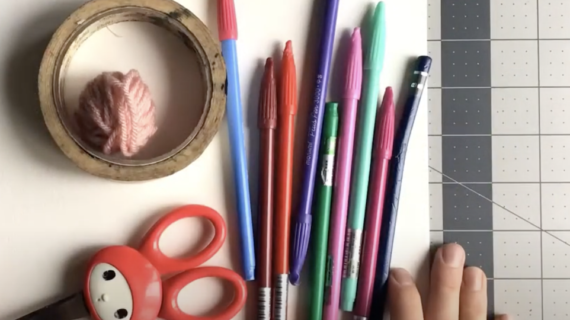
Local kids shouldn’t miss Heinz History Center’s “A Woman’s Place” exhibit
Have you ever heard of Rosalind Franklin’s groundbreaking discoveries about DNA structure? Did you know that the world’s first digital computer was programmed by a group of women? If any of this is news to you, you’re not alone — women’s achievements have often been overlooked or misattributed to men.
Fortunately, the “A Woman’s Place: How Women Shaped Pittsburgh” exhibit at the Heinz History Center was made to help combat these injustices. The exhibit is running now through Oct. 6.
“A Woman’s Place: How Women Shaped Pittsburgh” explores what “a woman’s place” in Pittsburgh history actually was, and highlights and reveals how women in Pittsburgh impacted sports, media, war, work, art and more. As an aspiring female journalist, I was interested to learn more.
I was given a tour of the exhibit by Emily Ruby, a curator of the exhibit who’s been with the Heinz History Center for 16 years. At the start of our tour, Emily explained to me the meaning behind the title “A Woman’s Place: How Women Shaped Pittsburgh.”
The title explores what “a woman’s place” actually is and how the idea of a woman’s “proper place: has changed and evolved over time,” Ruby says. It also looks at how “women have made space for themselves and contributed to the creation of this place.”
The first piece of the exhibit features a collection of women’s clothing from different time periods and industries, including the T-shirt of Anne Feeney, a local singer, songwriter, and activist, that says “A woman’s place is in her union.”
I love how the exhibit featured the stories of women from all time periods. It spans from 1776 with Abigail Adams, the wife of John Adams, telling him to remember women when laying down the foundational documents of the U.S, all the way to Ciora Thomas, a current activist for trans rights.
I also like how the exhibit was split up into the different fields in which women have made an impact. Highlights from the exhibit include:
Lucy Kennedy Miller and her sister Eliza Kennedy Smith in the women’s rights section. They were key figures in the women’s suffrage movement.
Nellie Bly in the media section. This journalist travelled around the world in just 72 days — even though she was told she couldn’t do it because she was a woman.
Mary Cardwell Dawson in the art and advocacy section. Dawson founded the National Negro Opera Company.
Bertha Lamme in the work section. She was the first female engineer at Westinghouse Electric Corporation.
Jodie Polk in the sports section. Polk was the first woman to play on a men’s football team with the Penn-Trafford Warriors.
Rosie the Riveter in the war section. This fictional character created during World War II has become an iconic symbol of women in the workforce, and so much more.
The exhibit also had many interactive features, such as a game where you plan what to pack on a journey as a journalist to see through the eyes of Nellie Bly, an interactive video featuring the inspiring story of the Rajcan immigrant family, and digital resources where you can select certain displays to learn more about them.
As we walked through the exhibit, there were many images of boxes. Emily explained that placing exhibit items around the boxes symbolizes women breaking out of the box of societal rules to create a new space and new place for themselves.
At the end of the exhibit, there was a collection of shoes owned by women above the quote: “Real change, enduring change happens one step at a time,” from Ruth Bader Ginsburg. The shoes symbolize each lasting step that was taken and continues to be taken towards changing the lives of women across the Pittsburgh area.
Emily mentioned that women’s history is commonly seen as “hidden history,” because women’s history is barely mentioned or learned by society. This exhibit aims to unveil these hidden histories, bring out the women who changed the world around them, and returning to them the credit for making change or discoveries that have been misattributed to men.
“A Woman’s Place: How Women Shaped Pittsburgh” is an inspiring and educational exhibit that gives a thorough overview of the hidden histories of Pittsburgh women. As someone who has interests ranging from STEM to the performing arts, I feel so inspired and thankful for these women who gained the freedom for me to be able to explore these fields. The women included in this exhibit gave rise to current female leaders like Malala Yousafizai, Naomi Osaka, Michelle Obama, and more, all of whom continue to pave the way to make the world a better place for all.














